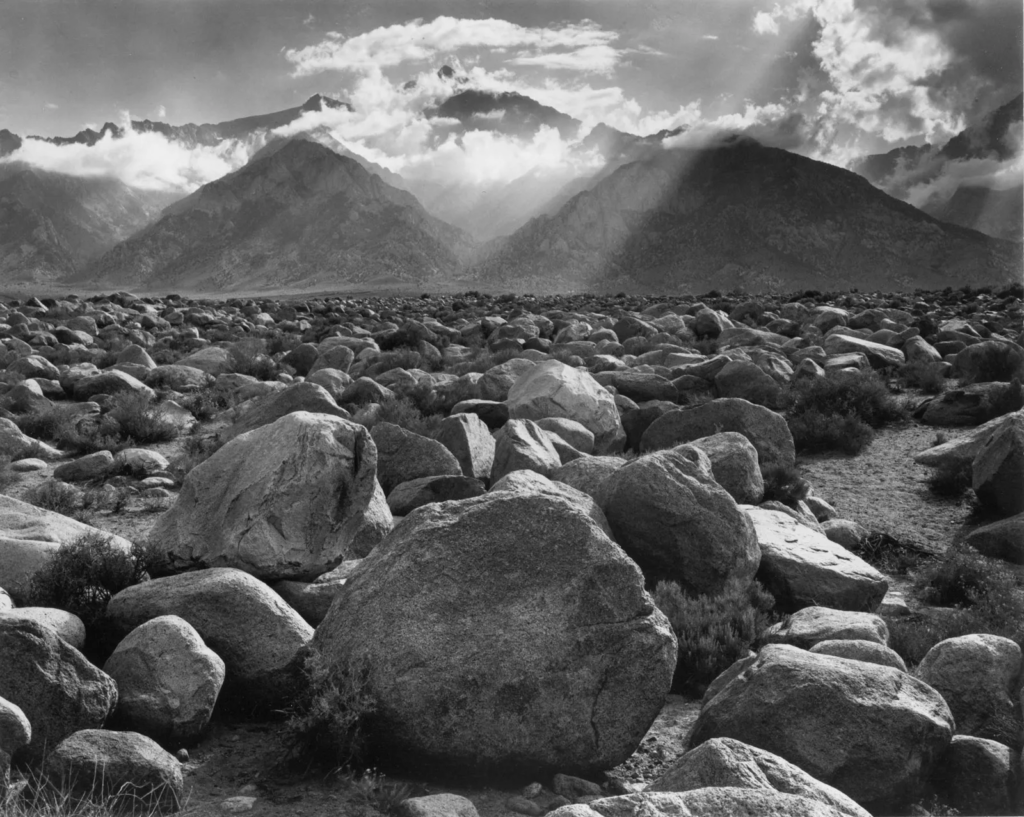Ansel Adams was an American landscape photographer and environmentalist born 20th February, 1902 and died 22nd April, 1984. He is mostly known known for his photography capturing black and white landscape images. Adams favoured sharp focus in photographs and advocated for photographers to use the full tonal range in their photographs by helping found ‘Group f/64’. He also developed the ‘Zone System’ with Fred Archer, which is a technique of determining optimal film exposure and development.


The camera equipment Ansel Adams used to take his most well known photos were with 8×10 and 4×5 view cameras. He also used other types of equipment such as 35mm and medium format roll film through less common formats (Polaroid type 55 and 7×17 panoramic cameras).
During Adams early childhood, he experienced the 1906 San Francisco earthquake, in which the aftershock led to him breaking and scarring his nose, with it remaining crooked for the rest of his life. He was interested in playing the piano at age 12 and taught himself to play and read music. Once visiting Yosemite National Park in 1916 with his family, his father gave him his first camera during the stay. Adams enjoyed the beauty of nature since he was a young age, and he would explore landscapes such as beaches and sea cliffs.


Zone System
Developed by Ansel Adams and Fred Archer, the Zone System is a photographic method of determining optimal film exposure and development. This system assigns numbers beginning from 0 and ending at 10 to different values of brightness. These brightness values typically include 0 representing pure black, 5 (V) representing middle grey, and 10 (X) representing pure white.


Visualisation
A principle of the Zone System is Visualisation, which is when a photographer manages to capture an evocative and eye-capturing photograph which involves the consideration by the photographer of where the camera is placed, which lens is used, and possibly the movement of the camera.


Select key image and produce analysis following criteria based on TECHNICAL, VISUAL, CONTEXTUAL, CONCEPTUAL
See photo literacy here:
https://www.photopedagogy.com/photo-literacy.html